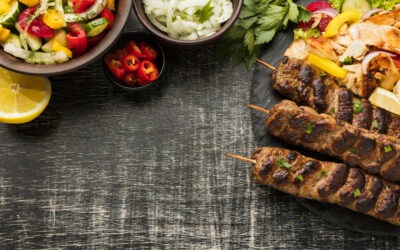What is HACCP and why is it important?
Hazard Analysis and Critical Control Points (HACCP) is an international system that ensures food safety at all stages of the supply chain, from production to distribution.
Originating in the 1960s, it is mandatory throughout the European Union thanks to EC Regulation 852/2004 and requires food businesses to develop a customized HACCP self-control plan that identifies critical control points (CCPs) and continuously monitors their effectiveness.
Considering the wide range of food businesses regulated by EC Regulation 852/2004 and the wide variety of products and production processes, the European Commission has drafted General Guidelines to facilitate the development and implementation of procedures based on the principles of the Codex Alimentarius CAC/RCP 1-1996 Rev 4-2003.
These guidelines, offer practical guidance for simplified management of HACCP requirements, with a special focus on the needs of small food businesses.
Even at the household level, it is useful to follow some of the HACCP guidelines to ensure that food is stored safely and to avoid contamination and health problems.
A crucial point in these guidelines concerns theorganization of food in the refrigerator, respecting the different temperatures needed for each type of food.
The basics of proper food organization in the refrigerator
Properly organizing food in the refrigerator is an essential aspect of preventing contamination and maintaining the freshness of products.
Each shelf has a different temperature, and foods should be arranged according to their specific needs. Shelf Arrangement Each area of the refrigerator offers different temperatures that should be taken advantage of to properly store food:
- Lower shelf (1-3°C): Ideal for raw meat and fresh fish, which require low temperatures to prevent the growth of dangerous bacteria.
-
Intermediate shelves (4-5°C): Intended for dairy products, eggs and cooked foods.
Make sure cooked foods are always stored in airtight containers. - Upper shelf (6-7°C): Warmer than the others, it is suitable for vegetables, non-watery fruits and ready-to-eat foods.
Use of refrigerator drawers and doors
- Bottom drawers: These drawers, which maintain an optimal moisture level, are perfect for storing fruits and vegetables.
- Refrigerator doors: This part is the least cold (down to 10°C) and is ideal for storing drinks, sauces and eggs.
Prevention of cross-contamination and good HACCP practices.
One of the main risks in food handling is cross-contamination, which occurs when bacteria from raw foods contaminate prepared foods.
Following HACCP standards helps prevent this risk.
Separation of raw and cooked foods
Raw foods, particularly meat, fish and eggs, can contain pathogenic bacteria such as Salmonella,Escherichia coli and Campylobacter, which can be transmitted to cooked foods if not handled properly.
These microorganisms are generally eliminated by cooking, but if raw foods contaminate already cooked or ready-to-eat foods, they can cause serious food poisoning.
Separating foods dramatically reduces this risk, protecting consumer health The use of airtight containers is critical to avoid contact and contamination.
Temperature control
Temperature control is a key point of HACCP regulations.
Perishable foods, such as meat, fish, dairy products and eggs, must be stored at low temperatures to prevent the growth of pathogenic bacteria.
Bacterial growth is most rapid in the“danger zone,” which is between 4°C and 60°C.
Keeping the refrigerator at a temperature below 5°C slows the growth of bacteria such as Salmonella andEscherichia coli, thus ensuring food safety.
Gastronorm containers, available from Prisma Italia, are a practical and versatile solution for professional kitchens in the Ho.Re.Ca. sector.
(Hotels, Restaurants, Catering).
Designed for safe storage and space optimization, these standardized containers are perfect for organizing food and ensuring compliance with HACCP regulations.
Available in various sizes, they fit perfectly in refrigerators and other kitchen equipment, facilitating food preparation and storage.
HACCP self-control plans.
The HACCP self-control plan is a document that every food business must prepare to identify critical control points and monitor the entire production process.
This plan is tailored to the business and ensures food safety at all stages, from transportation to storage.
For example, a self-control plan in the refrigerator context focuses on:
- Monitoring temperatures to ensure they remain within safe limits.
- Separation of raw and cooked foods to prevent contamination.
- Regular maintenance of the refrigerator to ensure that it works properly.
If you are looking for professional refrigerators and freezers to implement the HACCP self-control plan in your business, Prisma Italia offers high-quality solutions.
Here are two products that are ideal for your kitchen:
- Freezer 1 door 670 L: A freezer with a capacity of 670 liters, perfect for keeping your frozen products at optimal temperatures according to HACCP regulations.
- 1240 L 2-door refrigerator: With a capacity of 1240 liters and a sturdy construction, this refrigerator is ideal for professional kitchens, ensuring optimal space and temperature management.
Refrigerator maintenance and cleaning
A clean and well-maintained refrigerator is necessary to ensure food safety.
Even in a home environment, regular maintenance helps to prolong the life of food and avoid contamination.
- Cleaning of surfaces: Interior surfaces should be cleaned regularly to remove food debris and bacteria.
- Regular defrosting: The freezer should be defrosted when too much ice accumulates, which can affect the efficiency of the refrigerator.
- Checking gaskets: Door gaskets must close tightly to keep the temperature constant and prevent leakage.
Food labeling
Proper labeling of food is necessary to ensure food safety.
Labels should include the expiration date and storage temperature.
This helps maintain food traceability, facilitating compliance with HACCP regulations.
Conclusion: Ensuring food safety with HACCP
Following HACCP guidelines for organizing food in the refrigerator is one of many steps required to prevent contamination and ensure safe storage.
Be sure to separate raw and cooked foods, monitor temperatures, and keep the refrigerator clean.
If you need professional solutions for your business, consider purchasing appropriate equipment such as the 670 L 1 Door Freezer or the 1240 L 2 Door Refrigerator, both available at Prisma Italia.






